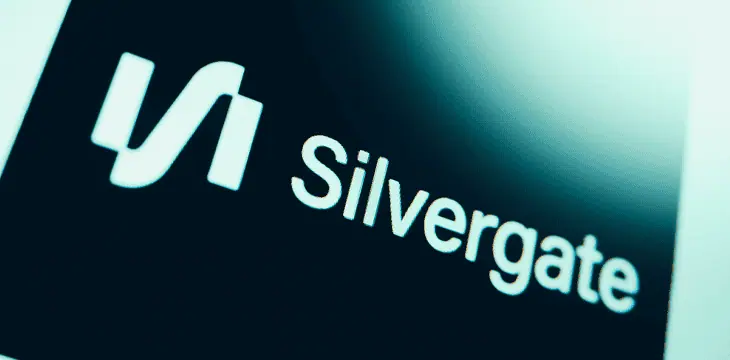|
Getting your Trinity Audio player ready...
|
The U.S. Securities and Exchange Commission (SEC) is showing no signs of halting its campaign against non-compliant ‘crypto’ crooks, regardless of whether they’re dead or alive.
On July 1, the SEC announced that it had filed charges against Silvergate Capital Corporation, which operated the California-based ‘crypto-friendly’ Silvergate Bank that went belly-up in March 2023. Silvergate’s collapse followed the November 2022 implosion of the FTX exchange, which (along with numerous other exchanges) had used the Silvergate Exchange Network (SEN) 24/7 settlement platform.
While Silvergate is deader than a doornail, the SEC’s charges also target the bank’s former CEO, Alan Lan; its former chief risk officer, Kathleen Fraher; and its former CFO, Antonio Martino. Lane and Fraher were charged with misleading investors as to the strength of the bank’s Bank Secrecy Act (BSA) and anti-money laundering (AML) compliance programs, while Martino stands accused of misleading investors as to the bank’s losses from debt securities sales following FTX’s demise.
Silvergate, Lane, and Fraher have all reached settlements with the SEC, while Martino is apparently holding out for a hero and/or a better deal. Silvergate has agreed to pay (if it can) a $50 million civil penalty, while Lane and Fraher will pay $1 million and $250,000, respectively. All the principals save Martino have agreed to permanent injunctions, with Lane and Fraher also agreeing to five-year officer-and-director prohibitions.
The SEC’s complaint, filed in the Southern District of New York, offers insights into the corruption at the heart of SEN, which launched in 2017. In addition to FTX, other prominent exchanges, including Binance.US, Gemini, and Kraken, made use of the network for their fiat currency transfer needs (primarily for customers to deposit fiat into their exchange accounts).
The SEC accuses Silvergate of failing to adequately monitor for suspicious activity among the $1 trillion worth of transactions that occurred on SEN in 2021 and 2022, as well as nearly $9 billion in suspicious transfers by FTX and its related entities (including the North Dimension sock puppet account set up by FTX attorney Daniel S. Friedberg).
Thanks to SEN, Silvergate’s ‘crypto asset’ customer deposits grew from $770 million in 2017 to over $14 billion by 2021. But when Silvergate’s BSA team informed CRO Fraher that the SEN transaction monitoring system was deficient, Fraher responded: “We have known of this issue and either we have established other controls to account for it or we haven’t and we have to take our lumps.”
Here’s those lumps you ordered
Just days before FTX’s lights went dark, Silvergate and CEO Lane signed official SEC documents falsely claiming that its risk management and compliance framework was “reasonably designed to detect” illegal activity by current or future customers.
In reality, the SEC claims that Silvergate “was essentially not conducting adequate ‘on-going monitoring of customer activities,’ nor did it employ ‘system monitoring rules tailored to digital currency activities’ that could ‘adequately screen and monitor [its] customers associated with the digital currency initiative for their compliance with anti-money laundering laws.'”
By November 15, 2022—four days after FTX filed for bankruptcy protection—Silvergate’s ‘crypto-related’ deposits had fallen by $6 billion, and Silvergate was “facing a liquidity crisis.” That same day, CEO Lane told the bank’s PR team to “go on the offensive” to counter the growing public perception that Silvergate had facilitated FTX’s misconduct.
Lane also ordered an analysis of all FTX-related activity that year, which ultimately identified over 300 “suspicious” transactions totaling $9 billion. These included “funds that flowed from FTX’s custodial accounts—which held FTX customer funds—to a series of non-custodial FTX-related entities’ accounts, followed by transfers of these funds to other third parties—either through the SEN or to accounts external to the Bank.”
Over the next few weeks, Lane made three public statements—two of them approved by Fraher—containing false or misleading information and material omissions regarding Silvergate’s BSA compliance programs. Lane made further misrepresentations in a public letter posted to LinkedIn and Twitter, as well as in response to a Congressional letter seeking answers on Silvergate’s FTX dealings, and also in a January 5, 2023, preliminary earnings call.
A billion here, a billion there…
Meanwhile, Silvergate CFO Martino allegedly perpetrated fraud on January 17, 2023, by telling investors that the bank expected to sell only $1.7 billion in debt securities in the first quarter of that year to partially repay the billions it borrowed in 2022.
But Silvergate had already sold $1.5 billion in securities by that January date, and the SEC claims Martino “knew or recklessly disregarded” the reality that the bank would need to (and did) sell another $1 billion in securities in the coming weeks. Martino also allegedly “further falsified” Silvergate’s financial statements regarding this and other undisclosed liabilities.
Last September, the Office of Inspector General (OIG) of the Federal Reserve System’s board of governors issued a post-mortem report summarizing Silvergate’s shortcomings. These included “significant weaknesses” in corporate governance, “ineffective” directors and senior management, and a general failure to keep pace with the bank’s growth, complexity, and risk profile.
OIG also flagged the fact that “nepotism, evidenced in the several familial relationships among members of the bank’s senior leadership team, undermined the effectiveness of the bank’s risk management function.” Lane’s son-in-law, Tyler Pearson, was Silvergate’s chief risk officer until FTX’s demise, while other relatives served in other prominent posts.
The SEC said its $50 million settlement with Silvergate “may be offset by penalties paid” to the Fed and the California Department of Financial Protection and Innovation (DFPI). The DFPI settlement, which was also announced on July 1, imposes a $20 million penalty on Silvergate, while the Fed claimed $43 million in its June 4 settlement.
Following Silvergate’s demise—and the near-simultaneous demise of New York’s Signature Bank—many ‘crypto’ operators transferred their activity to Customers Bank, whose CBIT (Customers Bank Instant Token) network offered similar transaction access as SEN.
CBIT was designed by blockchain tech firm Tassat, which also powered Signature’s Signet network. Shortly after Signature became toast, Tassat CEO Kevin Greene called ‘crypto’ payment settlements “a distraction” for his company.
That said, considering that Silvergate’s former C-suite is now cooperating with federal agencies and telling them all about the company’s dealings with major ‘crypto’ entities, anything connecting this wolves’ den to the traditional finance sector is likely to prove more than a ‘distraction’ in the months to come.
Watch: It’s time for the Bitcoin ecosystem to grow—here’s how

 08-08-2025
08-08-2025 





